Setting this blog up to chronicle my research into biotope enclosures. I will do my best to provide accurate information, but I am also just some guy on the internet so take my word with a grain of salt.
Last active 2 hours ago
Don't wanna be here? Send us removal request.
Text
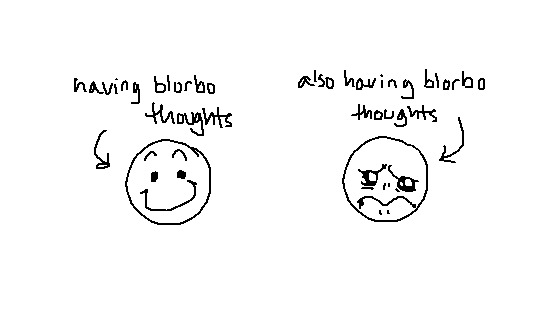
he makes me so happy and so profoundly sad at the same time
161K notes
·
View notes
Text
Researching more biotope ideas (I didn't forget this blog I prommy!!) and found a really really useful website for anyone doing a California based biotope!!
All sorts of filters for the habitat and location of the plant, and it even lets you filter for commercially available plants!! You have no idea how stoked I was to find this.
0 notes
Text
Strong reminder that cacti should NOT be wild collected
I’ll be grabbing some articles in a separate set of posts for better weight but till then I’m gonna start with this post here;
When people hear about plants that are poached by plant collectors to the point of being endangered/extinct we hear plants like orchid species, carnivorous plants like venus fly traps, sundews, and pitcher plants. One that gets thrown under the bus and forgotten in that word of warning though it always tends to be the succulents and especially the cacti.
Cacti are thought of as these plants that are utterly indestructible, taking on environments that many other plants cannot. This is true but it often comes at a price; most grow/reproduce super slowly in the wild and can take years just to reach sexual maturity, making them particularly vulnerable when mature plants are taken from their habitat and brought into horticulture. Also like other wild collected plants, there comes a huge risk of either bringing pests/diseases into domestic plant collections (via the poached plants) or making the collected plants all the rarer by killing them off from the pests/diseases that already exist in plant collections.
Except in extremely specific circumstances (a habitat being destroyed for urbanization/agriculture being one of those cases) cacti should not be taken from the wild, nor should they be purchased from sources which encourage the collecting of wild cacti. Leave wild cacti alone and enjoy/admire them from afar, and instead support responsible horticulturalists that sell cacti propagated from nursery stock (which do so from seed and/or cuttings). They may be smaller than their wild counterparts due to the difference in age, but they will reach that magnificent size with time, and will at least make sure that such old plants still exist in the wild in the first place.
2K notes
·
View notes
Text
Paraguana peninsula Biotope
Target Species: Green Bottle Blue Tarantula (Chromatopelma cyaneopubescens)
Location: Paraguana peninsula, Northern Venezuela, South America
Habitat Type: Desert
I know this blog's been quiet, since I started it, but I'm finally back with my first biotope summary and its even one I've recently built! It was finally time for me to upgrade my Chromatopelma cyaneopubescens Vlad into her adult enclosure.
This is not a care guide, if you are looking for information on care for this species there are sources at the bottom of this post written by tarantula keepers much more experienced than me. I used many of them when I was originally deciding if this was a species I would like to keep.
The target species of this enclosure is a docile species of new world tarantula. They boast dark blue and rusty orange coloration, and once settled into an enclosure, are typically outgoing enough for you to see and enjoy them. They are a burrowing species that will build a thick web around the entrance, so providing plenty of substrate and structure to anchor to is key. They also don't require conditions that are terribly difficult to maintain. Unfortunately they are classified as critically endangered in the wild, potentially making the captive bred population of this species an important resource.


Original Photos: young specimen with juvenile coloration, 21 Mar. 2023 (Left). Vlad almost fully transitioned to the adult coloration, 14 Feb. 2024 (Right).
The setup I built is very simple. The only animals are the target species and cleanup crew (isopods, not habitat accurate). All foliage is artificial, as I didn't want to potentially stress her with a grow light to maintain plants that she will likely web over anyway (the LED above her cage will only be turned on for viewing). So this outline will have much less specific information on the flora and fauna that occur in this habitat outside of the target species than future outlines will.
I had some trouble finding photos I was sure were habitat from Paraguana that weren't wide shots, let alone photos of C. cyaneopubescens in its natural environment, but based on photos like this one:

Cerro Santa Ana, Paraguaná Peninsula, Venezuela - by Jujovar2010.
And a couple of short descriptions, this habitat seems to be characterized by dense shrubs and barrel cacti. The deserts of this region are also characterized by sand dunes, but C. cyaneopubescens reportedly (and in my experience) likes to anchor their webs around plants. So It is unlikely one would willingly spend much of its time out on open sand dunes.

Desert on the Way to Paraguaná- by R, Frank Morales, 12 Oct. 2009. Flickr
With that information, my observations on Vlad's habits, and the materials available, this is the setup I've put together.

Original Photo, 9 Sept. 2024.
I kept things simple, as this is one of my smaller terrariums inhabited by an animal, and much of it will eventually be covered by webbing as well. I included branches of various sizes to simulate the underbrush and a hollow piece of cholla wood mounted in a vertical position. The cholla wood is not a biotypically accurate variety of cactus, but it provides a convenient naturalistic hide for the tarantula. I also chose faux grass that would mimic the look of dormant desert grass. I may make some adjustments when I get the chance, specifically replacing the current water bowl with one that fits into the scape better.
Bonus cryptid spotting:

Original Photo, 12 Sept. 2024.
Image Descriptions in Alt
Sources under cut
David, Zach. “Chromatopelma Cyaneopubescens 101: Care, Enclosure, Temperament & More.” Beyond The Treat, 22 Aug. 2019, https://beyondthetreat.com/chromatopelma-cyaneopubescens/.
“Green Bottle Blue Tarantula Care.” The Tarantula Collective, https://www.thetarantulacollective.com/caresheets/chromatopelma-cyaneopubescens. Accessed 23 July 2024.
Greenbottle Blue Care Sheet | Tarantula Husbandry | TARANTULAS.Com. http://tarantulas.com/caresheets/C_cyaneopubescens.html. Accessed 12 Sept. 2024.
“Greenbottle Blue Tarantula.” Wikipedia, 25 Feb. 2024. Wikipedia, https://en.wikipedia.org/w/index.php?title=Greenbottle_blue_tarantula&oldid=1210157315.
Greenbottle Blue Tarantula: GBB Care, Facts & Species - More Reptiles. https://www.morereptiles.com/greenbottle-blue-tarantula/. Accessed 12 Sept. 2024.
Klich, Szymon. “Chromatopelma Cyaneopubescens: Green Bottle Blue Tarantula.” Spiders World, 18 Dec. 2023, https://spiderswrld.com/chromatopelma-cyaneopubescens-description/.
Paraguaná & Médanos de Coro: Where Desert Meets the Caribbean | LAC Geo. https://lacgeo.com/paraguana-peninsula-medanos-coro. Accessed 12 Sept. 2024.
Paraguaná Peninsula | Caribbean Sea, Gulf of Venezuela, Araya Peninsula | Britannica. https://www.britannica.com/place/Paraguana-Peninsula. Accessed 12 Sept. 2024.
R, Frank Morales. Desert on the Way to Paraguaná. photo, 12 Oct. 2009. Flickr, https://www.flickr.com/photos/frankmorales/4006822182/.
Will. Green Bottle Blue Tarantula Care Guide and FAQs. 22 June 2022, https://thespiderblog.com/green-bottle-blue-tarantula-care-guide-and-faqs/.
big shout out to the Zotero extension for making compiling the sources for this thing I do in my free time MUCH easier
#biotope#vivarium#tarantula#green bottle blue#Chromatopelma cyaneopubescens#desert terrarium#terrarium#paraguana peninsula#venezuela#my builds#EDIT: vlad photo is from this year not 2014 😭😂 I didn’t wait until she was 10 to upgrade her!!! she’s only one year old!!!
5 notes
·
View notes
Text
I suppose I should talk about my biotope projects? This blog doesn’t have any followers yet but yk… they’re all currently only in the research stage but we’re making progress.
Lower Salween or Irrawaddy river, Myanmar: leaning towards the Salween but these are two very similar rivers in Myanmar with a lot of overlap. The goal is to build this one once I have space for a 6ft tank to put my clouded archers in. Pictures of the animals in situe are proving hard to find so still figuring out the scape.
Corn Snake, southeast USA: I have two boys and I’m hoping nice bioactive would make their (already easy) care even easier. And I like to try to spoil my animals. I'll probably make a field biotope and a forest clearing biotope. One is a creamsicle and therefore has some great plains ratsnake in his lineage as well, so I'm specifically focusing on an area in Louisianan where the natural range of both species overlaps. I'm the closest to being ready to set these up.
New Caledonia: I love the reptiles from here that are in the hobby, but this one’s more of a grail for me at the moment. I’ve only found one commercially available native species of plant. And it’s technically a shrub. Apparently New Caledonia was isolated from the mainland a very long time ago, so the species there a unique and many are endemic. Many of the plants there are from phylogenies that have gone extinct everywhere else. This may make finding similar plants to substitute a challenge as well. More research needed.
Cameroon Rain Forest Floor: This one is for a species very high on my bucket list, the Calabar Boa. Which is a very shy fossorial species. This habitat is also home to some very interesting plants that I'm very much interested in trying to keep.
0 notes
Text
Bearded dragon substrate, humidity, and diet.
Inspired by @kaijutegu's recent post, let’s talk about calcium sand.
So, calcium sand, and substrate in general, has been attributed to impaction in bearded dragons (and other reptiles, but for this post, we’re just focusing on dragons.) However, while some substrates are more natural choices than others, and as such are more digestible, substrate itself is typically not the root cause of impaction. Improper husbandry such as dehydration, improper lighting, diet and supplementation all negatively impact the digestive system as well as the body in general, and the problems only compact when these factors are stacked together.
Firstly, lets look at a bearded dragons natural habitat. This video courtesy of the veterinarian Jonathon Howard, known online as the Beardie Vet, shows the texture of the substrate that wild dragons live on. The sand is loose on top but packed underneath. The grain size is about 96% fine sand.
Next, lets look at this map.
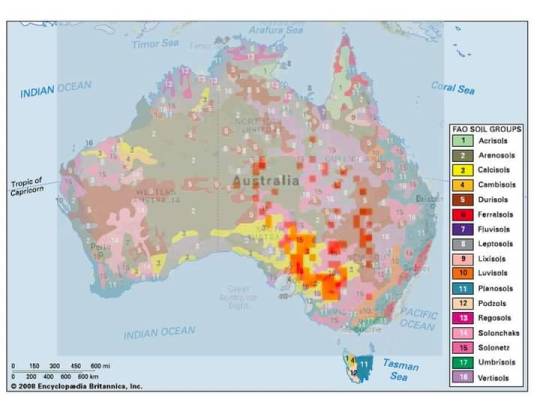
This map courtesy of Claire Jaworski overlays wild bearded dragon sightings from iNaturalist over a soil composition map of Australia. Note how many of the sightings are found in Calsisol zones. Calsisol (also known as calcarosol) zones are characterized by containing 15% or more calcium carbonate. We know that bearded dragons engage in geophagy, or intentionally eating substrate. This is likely a natural behavior that they would perform in the wild to fulfill their biological need for calcium. We provide calcium as a supplement so that they do not perform this behavior in captivity (however this is not the only vitamin we should be providing!!!)
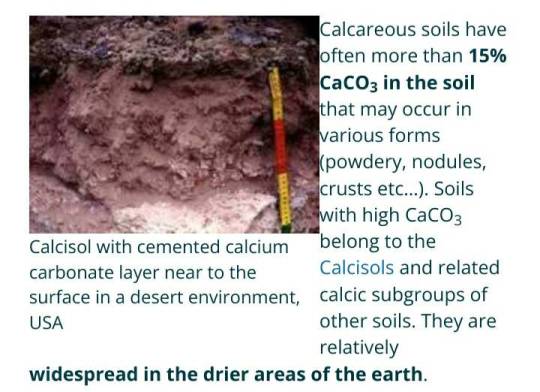
Next we should consider humidity, as there is not much standing water in their natural habitat, as well as diet, which they also obtain water from.
Contrary to popular belief, the natural habitat of bearded dragons has a very wide range of humidity, both throughout the day and throughout the year. When they are found basking, the humidity typically ranges between 10-30%. However, the morning after rain can be around 60%.
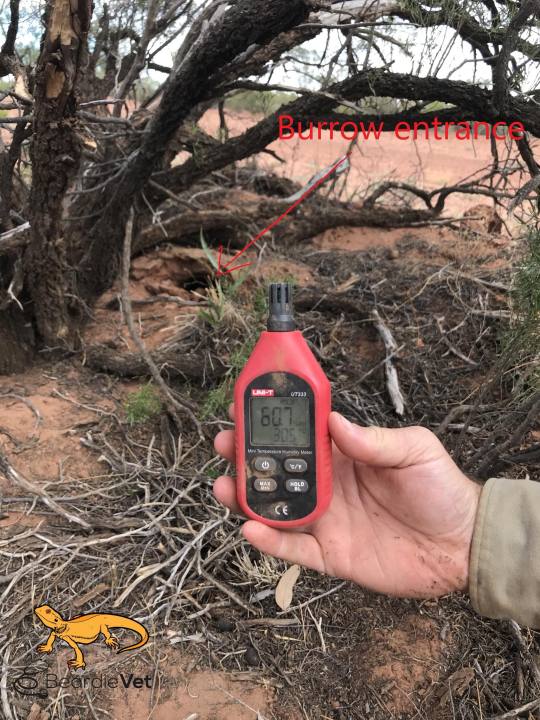
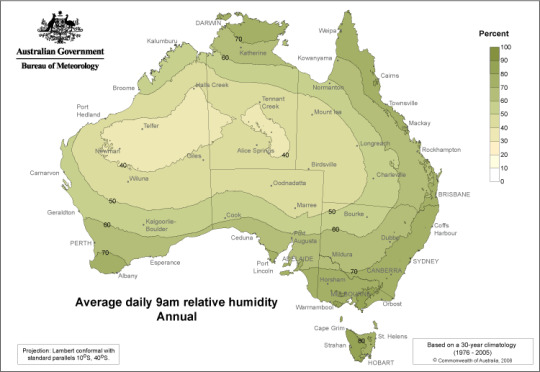
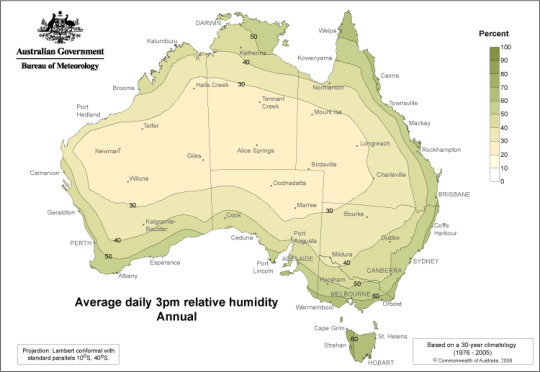
According to these maps, which measured the humidity of Australia over the course of 30 years, many dragons would be found in areas that range between 50-70% humidity in the morning and 20-40% at 3 in the afternoon.
It is also important to note that dragons are frequently found in burrows when not out and about. In these burrows, the humidity can be higher than the surrounding air.
As far as diet, this entire post is just a fantastic resource, again, courtesy of the Beardie Vet. In the wild, adult female dragons would be ingesting 48% plant matter in their diet, with males ingesting 68%. As far as moisture content, “Most plants/herbs are around 85% water – herbage 80% water, flowers observed eating >90% water; Insects are about 65% water – Termites 60% water, crickets 67% water.”
Bearded dragons, while they do not spend a lot of time drinking, are dependent on both the natural humidity cycle and their diet to stay hydrated. It is not natural to maintain a humidity of 30% or lower all year round, and compounded with poor diet and lack of access to water, can lead to dehydration, which in turn disrupts the digestive system’s ability to do its job.
So let's bring it back. Bearded dragons are naturally found on substrate with calcium in it. If you look at Zoomed or Fluker’s calcium supplement, for example, you will see that they are calcium carbonate. If you look at the ingredients for T-Rex, RepTerra or Komodo’s calcium sand, all are made with the exact same calcium carbonate.
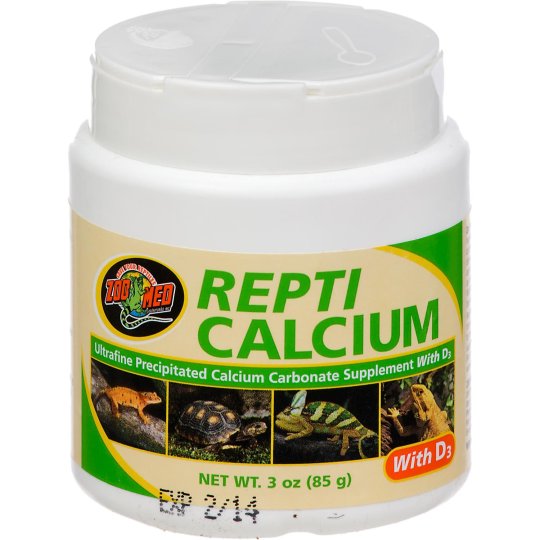
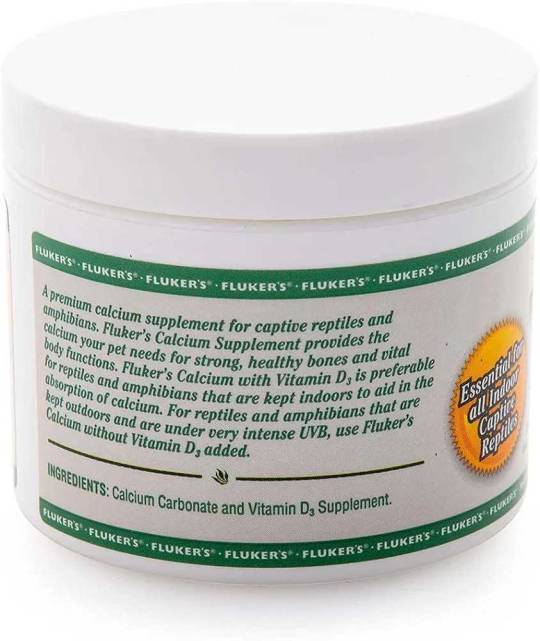

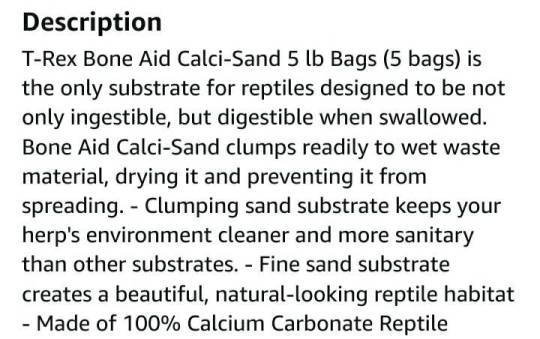
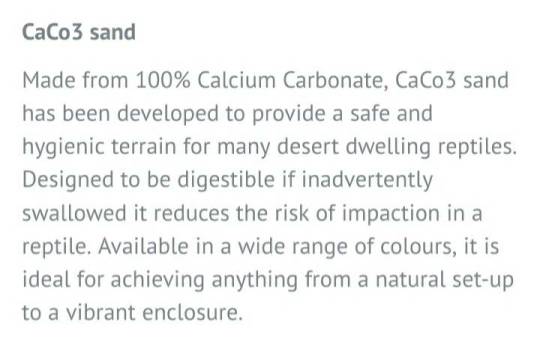
So what’s the problem? The problem is, in the absence of poor husbandry, the ratio. Remember that Calsisol is 15% or more calcium carbonate. Well, most bags of calcium sand are 100% calcium carbonate. They should not be used straight, instead mixed together with other safe substrates such as children's play sand, excavator clay, and pesticide and fertilizer-free topsoil to create a natural and safe substrate mixture. The proper substrate will not only allow them to create burrows like they would in the wild, it will allow females a safe place to lay eggs (which they can do even without the presence of a male), help retain heat, and keep humidity at normal levels, as well as provide natural enrichment.
Thank you for reading.
208 notes
·
View notes
Text
I’m sooooooo sleepy and a I have an early day tomorrow but all I wanna do is biotope researchhhh
1 note
·
View note
Text
Book recommendation time

This baby right here is what first introduced me to the concept of a biotope. It also sparked my interest in brackish animals, truly an important and pivotal tome for me looking back.
The author provides a lot of very good information in a very concise manner in this book, and it will likely be referenced in many future posts. They outline fish care in the context of biotopes, encouraging new fish hobbyists to try to recreate the natural habitats of the animals they keep. It outlines suggestions for scape structure of many common habitats that aquarium fish may come from. As well as providing suggestions for fitting inhabitants, and some basic care information on the species listed. It’s geared towards beginners, but outlines a wide variety of habitats so even slightly more experienced aquarists may find interesting information they didn’t already know.
It’s easy to find online and typically inexpensive, so if you’re an aquarium hobbyist at any level I highly recommend grabbing a copy.
0 notes
Text
Keep going to add to this blog then staring at how good Casey’s eye turned out in the pfp…. It’s just really satisfying…
0 notes
Text
What is a biotope setup?
A biotope setup is, simply put, a terrarium or aquarium that uses organisms that all naturally coexist in a single common habitat. These are constructed by keepers to mimic the residents’ native home, which is often reported to have a very positive effect on the health and behavior of the residents within. Even for captive bred specimens which have never seen their native habitat.
Components of a biotope:
Animals: this may be multiple species depending on the kind of setup and compatibility of residents to coexist.
Plants: many hobbyists focus more on the shape and density of the foliage, as opposed to getting exact species of plants. But it is sometimes possible to make the plants accurate as well.
Hardscape: rocks and/or wood. These are selected to emulate the color and texture of such materials found in the target habitat. Use safe materials, be very careful if collecting from outside.
Substrate: similar idea to the hardscape, but it’s also important to consider the needs of any plants for nutrients and potential buffering effects on pH when selecting materials.
Parameters: reproducing the conditions of the target environment by maintaining the proper pH, water hardness, temperature, humidity, and lighting.
Design: the goal of design in a biotope is to recreate a little slice of the target habitat.
Accurately emulating a specific habitat can be a challenge, but it’s a great way to learn more about the plants and animals you keep. And perhaps even improve your husbandry to boot.
Source
The Complete Aquarium by Peter W. Scott
1 note
·
View note
Text
Classification of aquarium fish behaviors:
Solitary: prefers to be kept by itself, may become aggressive or recalcitrant around tankmates (bettas, most large c/sa cichlids, some gobies)
Neutral: indifferent to tankmates provided they do not pose a threat (most gobies, smaller gourami)
Pair-bonded: may be kept individually but do best in mated pairs (angelfish, apistogramma)
Social: does not display true schooling behavior, but must be kept with conspecifics (livebearers, Bolivian rams, goldfish, mbuna, kribensis, rainbowfish)
Schooling: displays true schooling behavior within its own species, must be kept in groups of 6+ (most tetras, barbs, pencils and hatchetfish)
Shoaling: displays schooling behavior with its own species and similar species, keep in groups of 6+ with at least three individuals of each species (corydoras, otocinclus and many other dwarf catfish)
104 notes
·
View notes
Photo

Ruby Red Nothobranchius. This is my favorite killifish! Sadly, they only live around a year. That’s because in the wild they live in small pools that dry up annually. The species survives because of a pretty neat adaptation: the eggs can survive buried in the lake bed, even when the lake disappears. Once the rain returns, the eggs will hatch.
24 notes
·
View notes
Text
Some of these fish I see on stores… As beautiful as they can be people have no idea what they’re getting into.
Archer fish: brackish with special diet and housing. Will die in typical tropical aquariums.
SA arowana: 4’ jumpers… No place in an average aquarium… If you’re doing massive customs… Well all the power to you.
bichir: beautiful personality fish! But even the smallest varieties reach a foot in length. They’re belligerent predators. Great prehistoric fish, needs a specialty setup to thrive as an adult.
bucktooth tetra: I’ve seen these available in my saltwater store as piranha tetra/wolf tetra. They are beautiful, lively fish, but must be in a species only and in 12+ schools. They grow bigger making this hard. They’ll kill any fish regardless of aggression level or size. This includes eachother if they’re allowed to focus.
African butterfly fish: often brought to fish stores in poor condition. They have a poor survival rate unless specialty care is taken.
chaca catfish: not the prettiest fish. They’re venomous, aren’t afraid to sting you and will eat anything the width of their head. I’ve seen these as babies labled Sandy catfish due to their appearance. You don’t want one in your tank.
Chinese algae eater: once older they suck at eating algae and rather eat other fish. At a foot long that’s not a hard task.
cichla and pike cichlid: Big fish with special diet and care. They’ll outgrow most if not all aquariums, can’t have tankmates and require handmade diets. You don’t want these cool fish in your average cichlid tank.
electric catfish: Actually a dangerous fish. They shock strong and will send any fish with them flying. They also get big making them very hard to keep and manage.
mormyridae fish: These are your elephant fish, your knife fish. They can be cared for and are quite rewarding. But they require special diets and setups that are often large. Most normal or beginner aquarium owners will lose them or their other fish fast.
Flagtails: I saw these at my local petsmart labled as some sort of shark. Pretty when young. They get big, ate hyper, and can jump feet into the air. They leave most tanks in shambles even at a young age.
fossil cats: venomous and can cause a lot of harm even at an inch in length. They’re starting to become banned in a lot of places and should just be avoided.
giant gourami: I’ve seen them labled as whale gourami, grey gourami and goramy. They will almost always excced 2’ and are becoming more popular. Most people can’t deal with the size and dump them.
iridescent sharks: You wanted a “shark” You got one 4’ and up to 100lbs… Just try to manage one in your aquarium. They’re also catfish so will eat everything and sting.
pacu: The veggie Piranha. They grow massive and weigh 60 pounds. Most people will kill and eat them once they’re no longer able to be handled.
piranha: restricted in many places, I still see them for sale though. They get a fair size, need big schools, will kill and eat most anything…. But despite all that are very shy and lazy fish. Most people get bored once the predatory kick wares off and they become a lot of work.
pufferfish: not for a community. Most are brackish and require special diets and care. Some species can get bigger too. Do your research.
redtail catfish: Haha… They have personalities, but when adults are measured in feet, you should be worried.
rope fish: or Reed fish. Another one of those that grow big but can be managed. Do your research as they do have special care and tank requirements.
silver dollar: they need large tanks to thrive. They lose their appeal as adults. They can’t be housed with smaller fish or plants.
tiger shovel catfish: They get very large, are predators and are very easily spooked and startled often causing them to die of concussion damage.
shark catfish: I’ve seen them sold as silver sharks. They need a slow transition from fresh to marine water as they grow. They’ll rip the scales off of other fish regardless of size.
if you have any more feel free to add them. Theses are all fish I’ve seen being sold in stores or on local ads.
#reblog#advice#tank busters#predatory fish#specialty fish#archer fish#arowana#polypterus#exodon tetra#African butterfly#chaca chaca#Chinese algae eater#mormyridae#flagtail prochilodus#fossil catfish#iridescent shark#pacu#piranha#puffers#redtail catfish#ropefish#silver dollar#tiger shovel nose#shark cat
335 notes
·
View notes
Video
youtube
A short video of corydoras catfish swimming in the Amazon River. Excellent evidence that cory cats do best living in groups in captivity!
289 notes
·
View notes